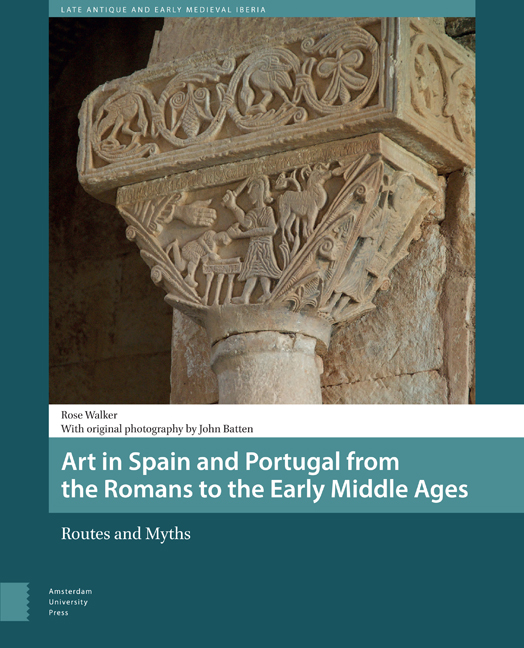Book contents
- Frontmatter
- Contents
- List of Illustrations
- Acknowledgements
- Conventions
- Abbreviations
- Introduction
- 1 The Lie of the Land: Art and Architecture Along the Roman Roads
- 2 Believing and Belonging: Late Antiquity and the Wider Mediterranean
- 3 The Visigothic Period: Fragmentation and Accretion
- 4 The Eighth and Ninth Centuries: Re-emergence and Invention
- 5 The Great Tenth Century
- 6 Dispersal After the Fall of the Caliphate
- 7 Trading Peace, Gold and Expertise, c. 1050-c. 1075
- 8 The Making of Romanesque: Reform and Synergy
- Epilogue
- Chronology 700-1100
- Bibliography of Cited Sources
- Index
8 - The Making of Romanesque: Reform and Synergy
Published online by Cambridge University Press: 12 February 2021
- Frontmatter
- Contents
- List of Illustrations
- Acknowledgements
- Conventions
- Abbreviations
- Introduction
- 1 The Lie of the Land: Art and Architecture Along the Roman Roads
- 2 Believing and Belonging: Late Antiquity and the Wider Mediterranean
- 3 The Visigothic Period: Fragmentation and Accretion
- 4 The Eighth and Ninth Centuries: Re-emergence and Invention
- 5 The Great Tenth Century
- 6 Dispersal After the Fall of the Caliphate
- 7 Trading Peace, Gold and Expertise, c. 1050-c. 1075
- 8 The Making of Romanesque: Reform and Synergy
- Epilogue
- Chronology 700-1100
- Bibliography of Cited Sources
- Index
Summary
Three events dominated the 1080s in the peninsula: the formal introduction of the Roman liturgy to León and Castile in 1080; Alfonso VI's occupation of Toledo in 1085; and the victory of the Almoravids at Zalaca (Sagrajas) over the same king in the following year. The first of these was the tangible result of closer contact with the papacy. The second gave unprecedented access to taifa culture and those who made it. The third event was to put an end to Alfonso VI's expansionist plans and would in the long term seriously exacerbate relations between Christians and Muslims within the peninsula. It also hampered the production of art and architecture in the taifa kingdoms. The 1090s saw the rise of the kingdom of Aragón and the conquest of Huesca. By the end of the first decade of the twelfth century, Alfonso VI was dead, and his kingdom ruled by his daughter, Queen Urraca, who had entered into a second marriage with the new king of Aragón, Alfonso I, known as ‘the Battler’. His foes were the same Almoravids who systematically toppled the taifa kings. Although Queen Urraca's reign was not the chaotic disaster that was once assumed, during this period the Christian kingdoms faced economic and political challenges of a new order. In the midst of all these upheavals, architectural and sculptural production in the northern kingdoms was transformed, acquiring the label ‘Romanesque’.
Early Romanesque art in Spain and Portugal is hotly contested territory. It has proved almost impossible for scholars to avoid the arguments over style and precedence that were first raised by those with a nationalist stance. ‘Spain or Toulouse’ has remained either an explicit or implicit agenda in many studies, a question that is accompanied by assumptions around pilgrimage, reconquest, and the flow of ‘influence’ down the roads from France into Spain. Throughout this book I have sought to adjust that balance by giving due weight to routes that crossed hypothetical divides. This chapter will look at two other networks that I believe intersected and worked together to bring about much of the peninsula's contribution to Romanesque art. One is a specific social network, the friendship circle of Pope Gregory VII and his successors.
- Type
- Chapter
- Information
- Art in Spain and Portugal from the Romans to the Early Middle AgesRoutes and Myths, pp. 305 - 346Publisher: Amsterdam University PressPrint publication year: 2016



